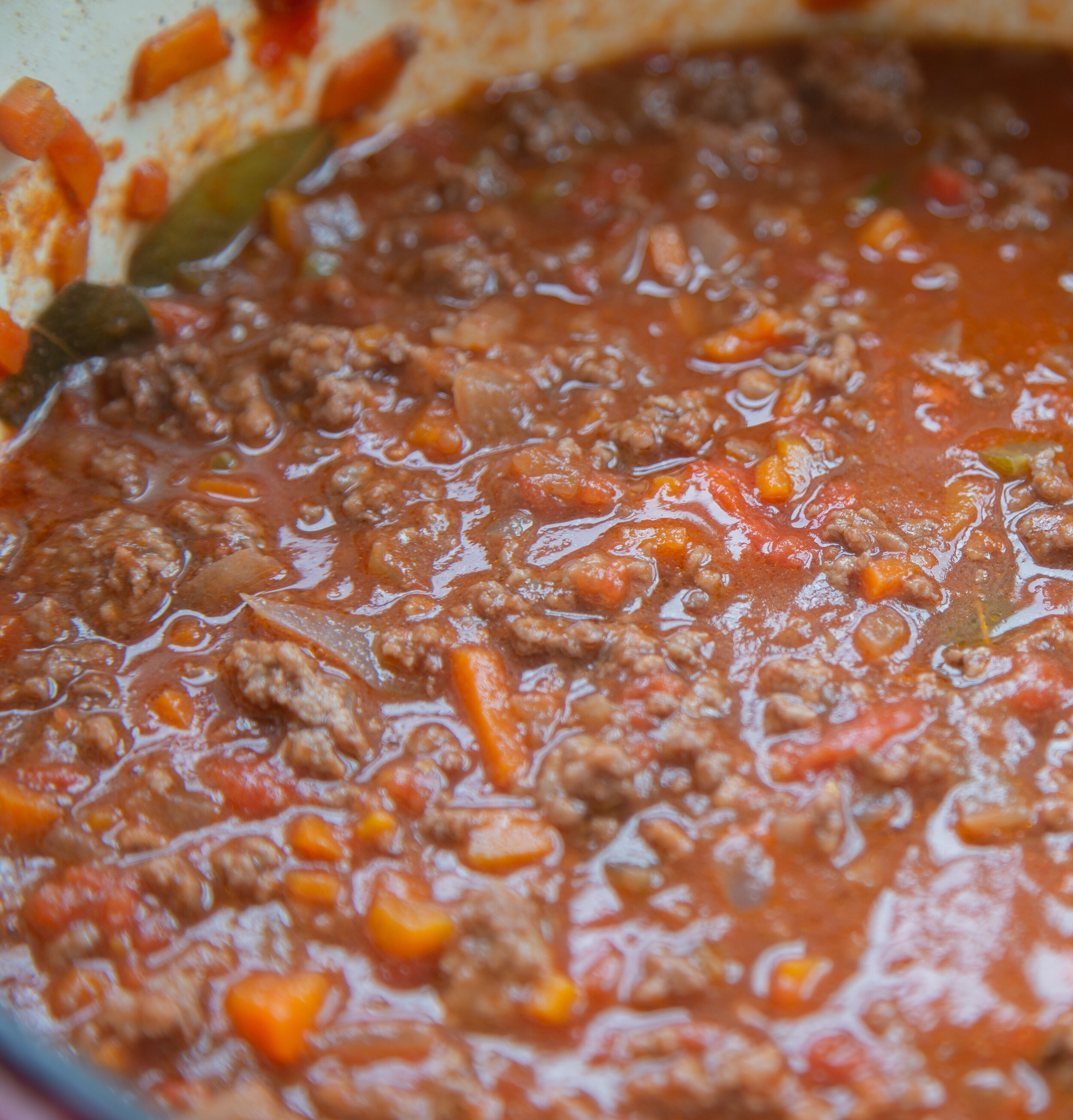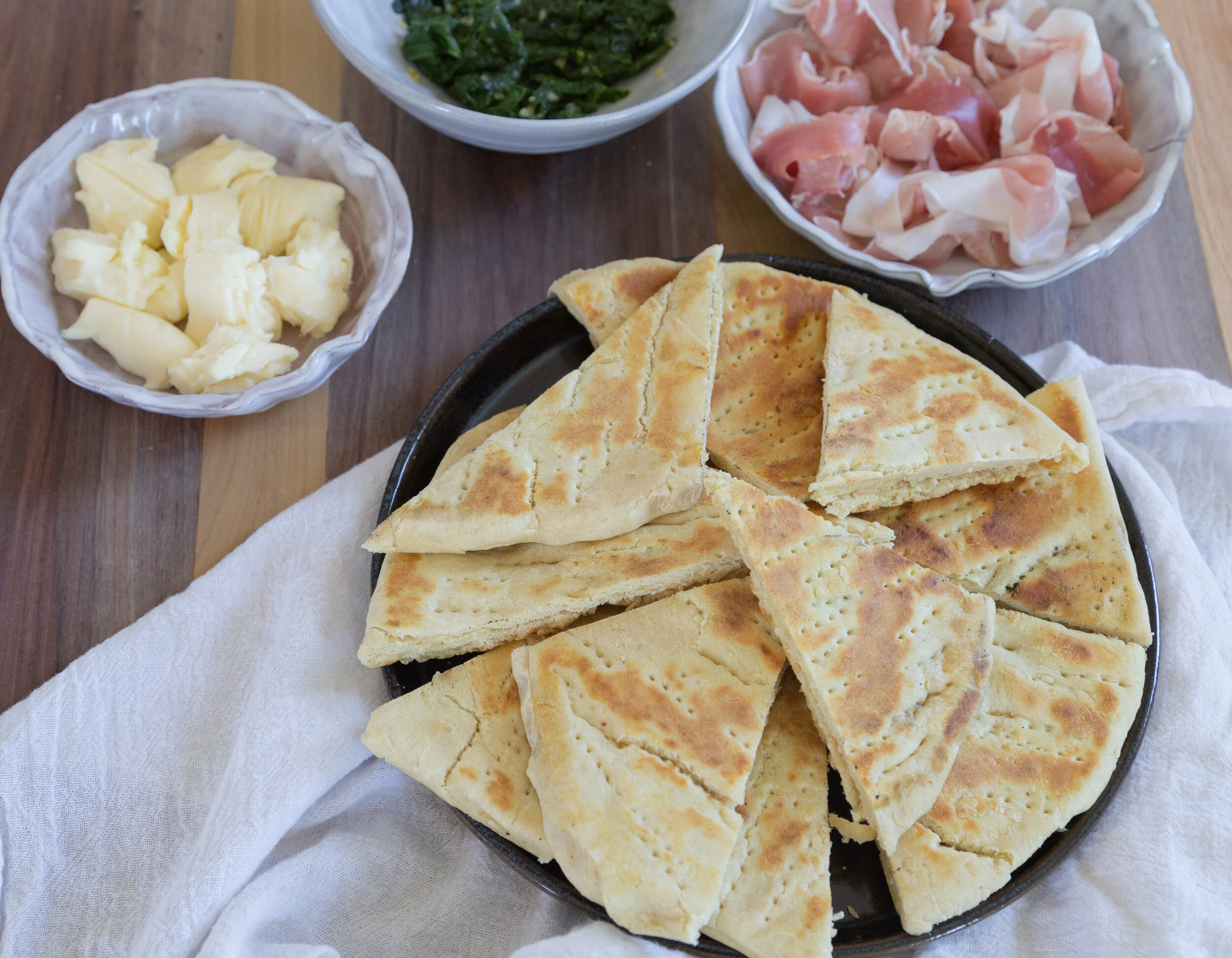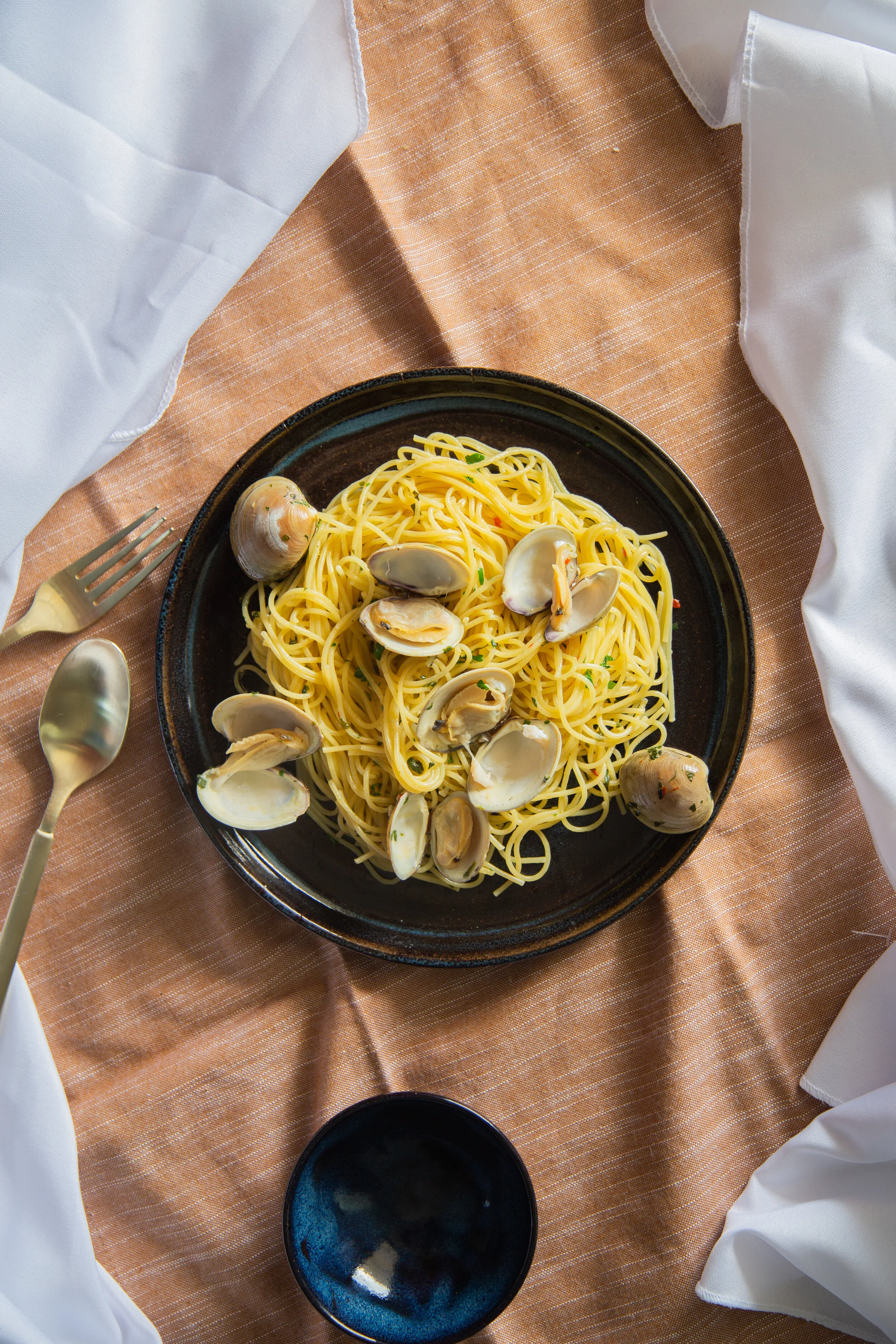Nonna Fio's Ragù alla Bolognese
There is a magical element to cooking. The handwritten script of a passed down recipe. The gathering of ingredients, seasonal, plucked at their very ripest. The meditative act of chopping, dicing. The potion-ry of making a bubbling stew. The slow stirring of fragrant elements. Cooking is magic… of this I am sure.
And perhaps there is no greater magic than an aromatic, family-memorized Ragù alla Bolognese served at a Sunday gathering.
Ragù vs. Bolognese
Ragù is not a Bolognese. But a Bolognese is a type of ragù. Confused? Yeah, me too my fellow American!
Somehow along the line, both ragù and “Bolognese” became tied with the idea of an Italian red meat sauce served on top of the pasta of your choice. Truth - both ragù and Bolognese are Italian meat sauces…. but they are not exactly exchangeable in terms of authentic vocabulary.
Think of a ragù as an entire “type” of sauce found throughout Italy. Ragù variations can be found throughout the entire country, ranging far and wide from our narrow view of a Americanized perspective of ragù.
All of Italy’s varieties of ragù have one similar element… meat! Most people aligned ragù with a tomato base, and although that is certainly an essential element, veal, beff, lamb, pork, fish or poultry are always in the main spotlight of the sauce. Toss in minced elements (known as a soffritto), add in a wine, broth and heavy cream or milk… and ta da!
Variations on the Ragù
Let’s take a quick tour of Italy’s most known ragù variations, shall we?
Ragù con le Bracioline - made with horsemeat filled with lardo (a fatty pancetta) or sausage, aromatics, aged pecorino and cooked for 3–6 hours in a tomato-based sauce.
Ragù alla Genovese - a white ragu made with onion, spices, and beef jaw muscle or leg and cooked for up to 6 hours.
Ragù alla Napoletana- made with chunked beef and pork and cooked in tomato sauce for at least 6 hours until the meat is fall apart tender. This variation is served with just sauce and pasta, and the meat is reserved for a secondi (second portion of dinner).
Ragù con le Polpettine - made with small, flour-coated meatballs (made of beef, sausage, grated Parmigiano Reggiano, breadcrumbs, egg) which are pan-seared and stewed with wine. Once the wine is cooked off, these meatballs are removed and a tomato-based sauce is made to deglaze the pan. Then the meatballs are added back in and cooked. Similar to Ragù alla Napoletana, these meatballs are served at a later portion of dinner after the pasta!
There are many more variation of the ragù throughout Italy. Throughout all authentic recipes, the use of seasonal, local ingredients are paramount. And so, regional varieties all showcase the areas’ best and most delicious options. For example, the southern regions of Sicilian and Calabrian utilizes fish, while Tuscans and Umbrian recipes are known for adding rabbit, duck or wild boar, Romans have been known to use cured meats and Abruzzo and Molise regions often use lamb and pork.
And of course, there’s Ragù alla Bolognese…
Ragù alla Bolognese
“Bolognese” as we think of it (in America, at least) is a quicker pasta sauce made with meatballs cooked in a tomato-based sauce.
But today, we’re focusing on the real deal. Ragù alla Bolognese is the type of savory meal that feels like a rite of passage for my education for Roaming Italy. How could I cook my way through Italy without attempting one of the most beloved pasta dishes out there?!
Ragù alla Bolognese is made with a mixture of ground pork and veal (or beef), a small amount of tomato paste, soffritto, aromatics, broth, wine, milk and cooked for 2–3 hours. Hailing for Bologna, the sauce dates all the way back to the 15th century, but it was first published by Pellegrino Artusi. Later, the City of Bologna commissioned the Accademia Italiana della Cucina to research and authenticate an official Bolognese recipe. And so, the official recipe was decreed on October 17, 1982. What a day for Bologna’s food history!
That said, one’s recipe of Ragù alla Bolognese is varies from family to. family. Variations like these are what make Italian nonnas the true secret keepers and guardians of some of the most delicious, authentic recipes that have been refined and edited for centuries. A great family recipe of Ragù alla Bolognese recipe is something to be proud of!
On Tradition
When determining what would be my first recipe from the Emilia-Romagna region, you all spoke loud and clear. Ragù alla Bolognese was the resounding request!
I am BLESSED beyond belief to have been given a true, family preserved Emilia Romagnan Ragù alla Bolognese recipe, passed on from my dear friend Andrea’s nonna Fio.
As Andrea tells me, “Fio loves cooking and we always spend time cooking together when I visit her! She knows all her recipes by memory, but she always double checks them in her cookbook ‘Il Cucchiaio D’Argento,’ a classic of Italian cuisine! She has a sweet tooth and adores any kind of jams! She knows how to cook basically everything from northern to southern Italy specialties because she lived in many different Italian cities and she learned the different traditions!”
It completely warmed my heart to learn about Nonna Fio and I am so, so honored to be able to cook her recipe and share it all with you today. Thank you Andrea and Nonna Fio!
(P.S. be sure to read this incredibly sweet article Andrea wrote about cooking with her grandmother! Sometimes I feel like I missed a major opportunity to cook along with my Italian relatives - as they passed away before I was old enough. Reading this makes me weepy!)
Nonna Fio’s Ragù' alla Bolognese
Ragù alla Bolognese
Serves 4-5
1 onion
2 carrots
1 celery stem
2 rosemary sprigs
2 bay leaves
Olive oil
1 lb ground beef
1/4 lb ground pork
1/2 glass of red wine
Salt
1 tsp Sugar
32 oz. crushed tomatoes or tomato passata
1/3 glass of milk
Region: Emilia-Romagna
Process
Dice your onions, carrots and celery and place them in a warmed pot with a douse of olive oil and a couple rosemary's sprigs. This is your soffrito!
Cook the soffrito for a few minutes over medium heat - covering the pot with a lid. Once the ingredients become soft (not crunchy) you add the minced beef and pork, mixing everything together until well blended.
Add your red wine to the mix, raise the heat and keep stirring. Once the alcohol has cooked off, add the tomato sauce. While you keep stirring, add a teaspoon of sugar, salt, and bay leaves.
Cook the ragù on low heat for at least 2-3 hours, stirring occassionally. The longer the ragù cooks, the better!
About a half an hour before the ragù is ready, add your milk into the sauce and stir.
Cook your tagliatelle in salted, boiling water. When perfectly, al dente toss the noodles into the ragù and serve on a warm plate.
Garnish with grated Parmigiano Reggiano.
ENJOY!
The magic of a homemade, hearty Bolognese. There’s nothing quite like the first bite of something held secret and close to the heart generation by generation.
A big thank you, once again to Andrea and her nonna Fio for this delicious recipe! Be sure to check out Andrea’s sustainable travel blog and give her a follow on Instagram. She’s delightful and completely in synch with what I believe here on the blog!


















